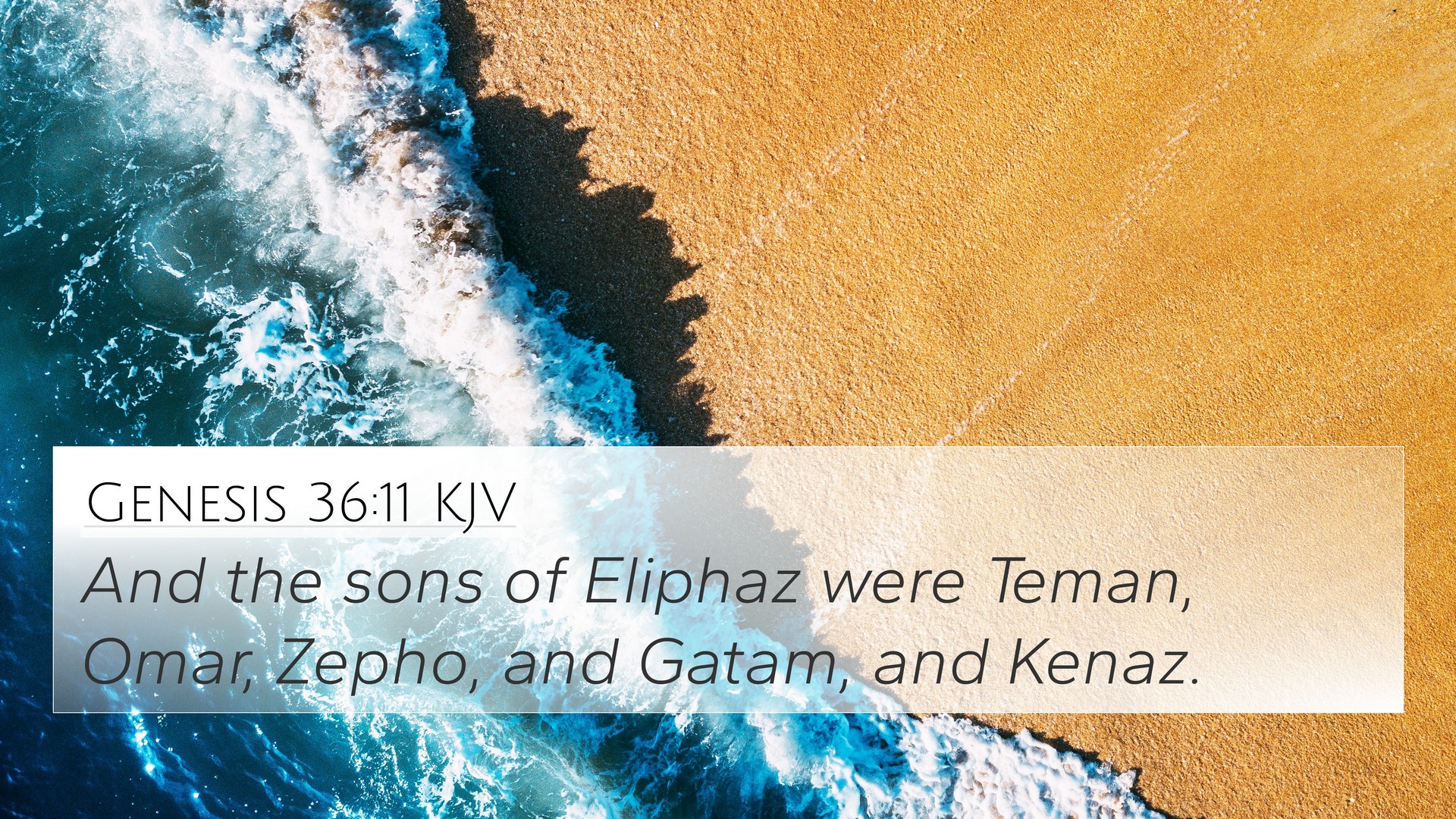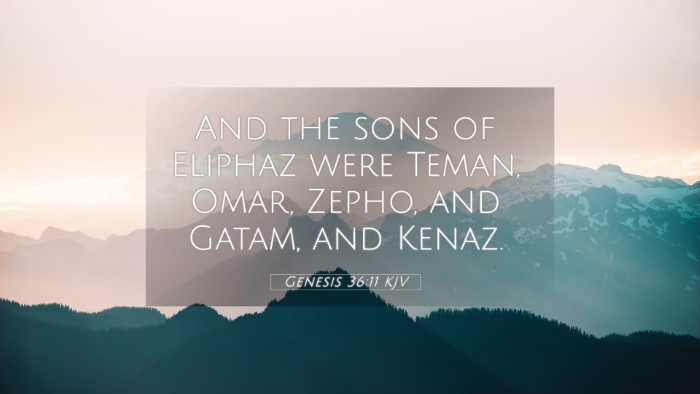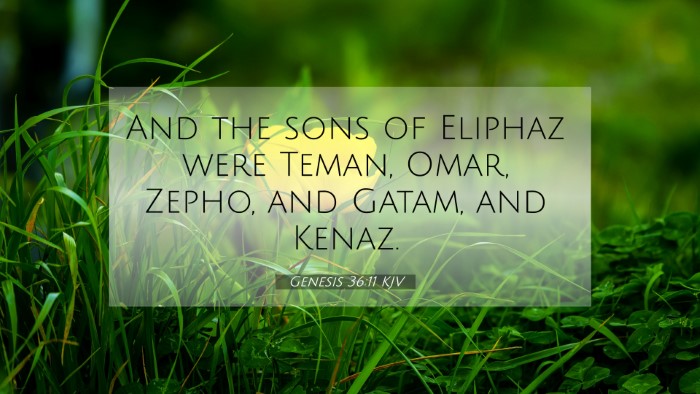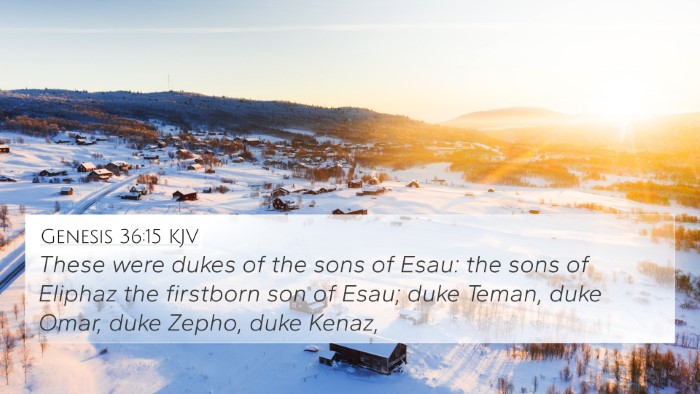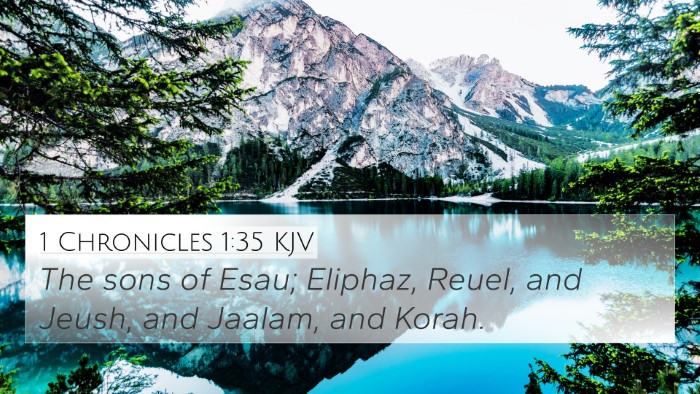Meaning and Interpretation of Genesis 36:11
Genesis 36:11 states: "And the sons of Eliphaz were Teman, Omar, Zepho, and Gatam, and Kenaz." This verse is a genealogical record, illustrating the descendants of Esau, focusing specifically on the lineage of Eliphaz, the firstborn of Esau. To gain a comprehensive understanding of this verse, we will analyze various interpretations and insights provided by renowned commentaries.
Commentary Insights
The naming of these individuals not only establishes the historical context but also carries deeper theological significance. Below are insights drawn from Matthew Henry, Albert Barnes, and Adam Clarke:
-
Matthew Henry's Commentary:
Henry emphasizes the importance of this genealogy in demonstrating God's faithfulness in fulfilling His promises. The descendants of Esau, despite their tumultuous history with Jacob, are noted as significant tribes. This shows God's mercy and grace extended even to those outside of the covenant people.
-
Albert Barnes' Commentary:
Barnes points out that the names listed reflect the characteristics and potential roles within their communities. Each name may carry meaning related to their traits or the regions they inhabited, reflecting the way genealogies in the Bible often serve to bridge personal identities with divine purpose.
-
Adam Clarke's Commentary:
Clarke remarks on the historical relevance of these names, suggesting that they trace the origins of several tribes. Furthermore, he explains that genealogies are crucial for understanding the broader narrative of the Old Testament, as they often highlight conflicts, alliances, and God’s overarching plan of redemption through history.
Theological Significance
The verse serves to showcase God's sovereign plan through the lineage of Esau’s descendants. It emphasizes the interconnectedness of biblical narratives through genealogies, which are foundational in establishing identity, covenant relationships, and the unfolding of God's plan. The mention of these names allows readers to trace not only the physical lineage but also spiritual implications of being chosen or rejected by God.
Cross-References Related to Genesis 36:11
-
Genesis 25:30: This verse discusses the birth of Esau and Jacob and the prophecy regarding their descendants.
-
Genesis 32:4: Here, we see Jacob referencing his brother Esau, which introduces tension that permeates their lineage.
-
Deuteronomy 2:4-5: These verses reflect on the land of Esau and the descendants of Esau, reaffirming their role in God’s plan.
-
Malachi 1:2-3: This passage addresses God’s love for Jacob and His hatred of Esau, providing a stark contrast in their fates.
-
Romans 9:12-13: Paul references the concept of election by discussing Jacob and Esau in terms of God’s sovereignty and purpose in salvation.
-
Hebrews 12:16: Discussing Esau’s character, this verse gives insight into the moral implications of his legacy.
-
Genesis 36:1: Here, the verse introduces the genealogy of Esau, setting the stage for the specific listings in Genesis 36:11.
Conclusion
Genesis 36:11 serves as a foundational verse in understanding the dynamics between Esau's lineage and the biblical narrative. As seen through the insights of various commentaries and the connections with other scriptures, this genealogy emphasizes God's sovereignty and the unfolding story of His people. Through tools for Bible cross-referencing, readers can explore these connections further, enhancing their understanding of the thematic links across the Scriptures.
